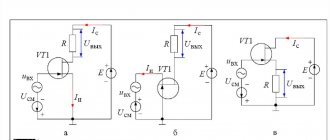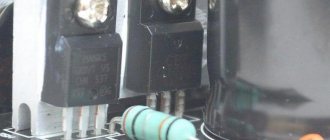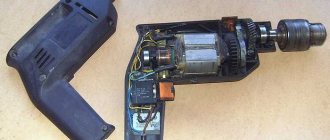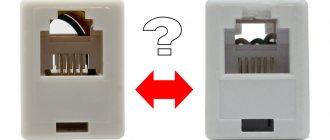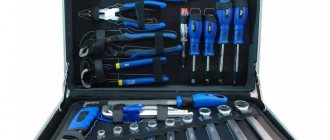Wrenches are now used almost everywhere, both in various equipment manufacturing companies and by workers carrying out repair and restoration work. They are also popular in everyday life.
As for the varieties of these keys, there are a great many of them and not everyone knows about all the options. As a matter of fact, it is for this reason that I decided that it was necessary, so to speak, to lift the veil of secrecy a little and make everything a little more understandable for ordinary people.
Wrench assignments
As mentioned at the very beginning, there are several types of wrenches and they all have a specific purpose. First of all, wrenches are used for repairing automotive equipment, during construction work, as well as for work related to the restoration of various types of equipment. Without a doubt, it all depends on the type of key itself.
As a matter of fact, approximately 90 percent of people who at least sometimes do some kind of repair work on their own use 2-3 types of keys, while the rest have a strictly specific direction and are not used on a regular basis.
Next, we will talk in detail about the types of keys so that everyone understands what they are. I will try to convey everything, as they say, in simple human language.
How to use it correctly?
On the one hand, there is nothing complicated in using wrenches, yet it is a very simple tool, on the other hand, if you have no experience at all, then you need to know some things. Otherwise, there may be negative consequences, both for the key itself and for the nut.
First, and most importantly, the wrench must strictly match the size of the nut or bolt. The jaws should “sit” tightly on the part and only after that you can start working. Otherwise, there is a high risk of the wrench breaking off and damaging the part. Secondly, the movements should be smooth, pulling, and not sharp like jerks. This is primarily due to your safety: if the key falls off, then with sudden movements the chance of injuring your hand by hitting something increases sharply.
Everyone knows the life hack when the key is extended using a tube, which makes the lever arm longer and transmits more force. But in fact this is a mistake, since there is a risk of damaging the nut or the key itself. You need to understand that if you don’t have enough strength to tighten the nut, most likely you need to work with the nut itself (for example, lubricate it), and not try to apply inadequate efforts. Also, do not use wrenches that are damaged. This is dangerous.
Types of keys
Here, in fact, we come to the most interesting part. If we talk about the size of the wrench, then most often we mean the distance between the jaws. As for the 19th and early 20th centuries, then the nominal size of the tool was determined somewhat differently; they followed the general parameters of the thread, which was left by the tool itself.
It is worth noting that in general it was initially believed that the first wrenches of the wrench type appeared only at the beginning of the 19th century, but in fact, there is evidence that such wrenches were used much earlier, although they had completely different characteristics.
Single-sided and double-sided open-end wrenches
When it comes to this type of key, there are open ends. The holes are made in the form of the Latin letter U. The size here may vary.
This tool is most often used to work on nuts and bolts that are difficult to access. It is very convenient to unscrew with this tool, there is a lot of space.
Double-sided spanners
A distinctive feature of this tool is that there is a closed loop at the end. In this case, the tool is used to work with bolts and nuts that have a hexagonal shape. However, there are also options in the form of a square.
The loops in this case are the same size at both ends. This version of the tool is used most often when it is impossible to complete the task with an open tool.
Combined key type
Here, in fact, everything is clear directly from the name itself. In this case, some combination of a spanner and an open-end wrench is used. There is a closed loop at one end, and an open loop at the other. The wrench is most often used to unscrew bolts and nuts; the open end will help you quickly remove them.
As you can imagine, this option of keys is used for a combination of actions, therefore, both ends are the same size.
Adjustable and adjustable wrenches
Such keys are of public type. They can only be used from one end. The hole size is not fixed. You can choose the size needed for a particular bolt or nut. However, the use of such keys is limited; they cannot be used in hard-to-reach places.
This type of adjustable wrench is used very often. In this case, there is a 15 degree offset of the jaws towards the handle. If we talk about the adjustable wrench in the sense that is currently used, then it was invented by Mr. Johonsson.
Let's still understand how to use such a tool correctly.
- First you need to select the nut or bolt that you want to secure.
- Next, open the rotary key using a screw. You need to open it so that the size is slightly larger than the size of the nut or bolt.
- Next, tighten the nut using a wrench.
- Turn the nut clockwise to tighten it, counterclockwise to loosen it.
- Loosen the screw and release the tool.
End version
The end tool must fit completely onto the bolt or nut. In this case, after turning, the key must be removed from the nut or bolt. The handles can be removed and reinstalled, but the socket will be higher than the bolt.
In fact, this option, in my personal opinion, is one of the most inconvenient. However, there is still one plus here: you can change the distance between the jaws. However, in the case of a socket wrench with replaceable heads, this advantage is completely eliminated.
Impact wrench
The type and size in this case are completely different. In this case, the block end of the handle is used, which was created exclusively for working with a hammer, thanks to which it is possible to add even more force to your actions.
Most often, such a tool is used to perform various tasks related to working with large fasteners.
The main advantage of this option is that the key here can withstand a very serious load.
Hexagonal
As for such a tool, it is most often used for unscrewing and tightening bolts and nuts that are difficult to get to, while, as the name implies, the bolts and nuts must have a hexagonal shape.
Hex tools come in two types - L-shape and T-shape. If we talk about the first option, they are created from hexagonal wire, the second option is with a hexagonal wire, which is attached to a metal or plastic handle.
As a matter of fact, in order to understand in more detail all the options for hexagons, you have the opportunity to contact any hardware store and choose the one that is more profitable in your particular case.
Balloon instruments
In this case, the name itself already makes it clear for what purposes this tool will be used. Most often, such a device is used both for tightening and loosening nuts on car wheels. As for this version of the wrench, an L-shaped rod is most often used here, with an end product on the curved tip, as well as a knee on the second. Currently, on the construction market it is possible to find a huge number of similar tools, but nevertheless, I strongly recommend buying a really high-quality product made of dense and reliable material.
Tubular version
Everything is very simple, in fact, it is an ordinary tube with a hexagon at the end. There are options with a bent tube, it all depends on your personal preference. There is a so-called spark plug type, which is used for removing car spark plugs.
How to choose the right tool: basic life hacks
The main criteria when choosing a tool are its purpose and size. There is no point in using a gas wrench when unscrewing nuts or using a hex wrench to work on a part with a star spline. When choosing a tool, you should know exactly how and why it will be used.
The dimension is no less important - the wrong size between the jaws can break the thread or damage the edges of the part. A solution might be to use more universal adjustable wrenches. However, practice shows that the simpler the tool, the more reliable and effective it is. It is better to have several sets of simple open-end or ring wrenches than a pair of adjustable wrenches.
The classic material for the manufacture of wrenches is tool steel containing the addition of chromium and vanadium (indicated by the CrV index). They increase the hardness of the working surface of the tool and, most importantly, its working profile. A special surface coating can be used to prevent corrosion.
The best option is galvanizing - it provides excellent protection of the metal coating from corrosion. Chrome-plated tools are too fragile and often chipped as a result of falls or impacts. Oxidation does not provide sufficient protection against corrosion, and the black color characteristic of this coating is impractical - it is difficult to find such a tool in the dark.
What kind of wrenches do you use? Monolithic Compound
When choosing a tool, you need to take into account the material of its handle. The efficiency of work largely depends on the convenience of how it lies in the hand. For monolithic keys, it is usually made of the same material as the working part. For adjustable or pipe handles, the handle may have a rubber anti-slip pad. Particularly safe tools have a dielectric coating on the handle, which makes them safe when working with parts that may be live.
Ratchet wrenches
The main advantage of a product with a ratchet is that you do not need to reposition the key. This is without a doubt a huge plus. Ratchet mechanisms can be very different, first of all, the differences relate to the number of teeth, there can be 50, 72, and so on. In this case, different degrees are used for rotation. It is calculated quite simply, you just need to divide 360 by the number of teeth.
As for products with ratchets, I would advise buying this tool if you have regular work related to the repair and maintenance of various equipment. There are a huge number of companies that manufacture such ratchets, and according to my observations, domestic manufacturers have now really stepped forward in terms of quality and are practically no different from the same Japanese, American or German analogues, with all this, the cost of the product is significantly below.
